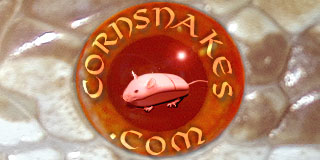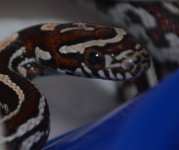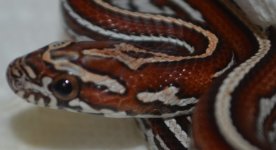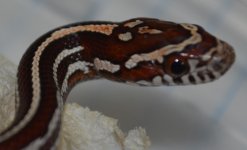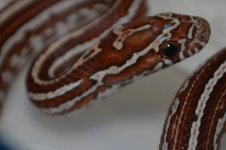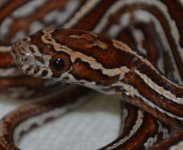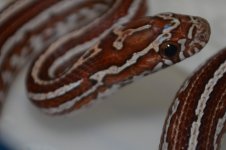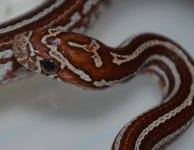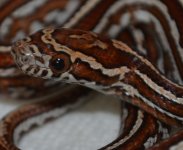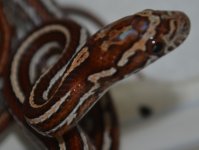MysticExotics
(formerly NWHeather)
I would like to know who has done Tessera X Tessera pairings.
How many held the whole clutch of Tessera's back to test breed?
If so, how many eggs in the clutch, how many went full term?
How many found out the had a Super Tessera by accident?
In talking with Don S. he mentioned that he (and others) had done Tessera X Tessera, and a couple babies he sent over seas ended up being Supers.
He said he held back some babies, but I don't know if he, or other breeders that he referenced held back entire clutches of Tessera's, or if they selected the ones they thought would be Super to hold back.
I'm sure there are Super Tessera's out there that are in pet homes, and we'll never know that they are Supers.
I currently have a Miami Tessera X Miami Tessera clutch that I am holding back all of the Tessera's to test breed and see which ones are Supers.
Out of 19 eggs (all of which hatched), 16 of those are Tessera's, and three are normal Miami's.
Murphy was kind to me, but at the same time, that is 16 babies to grow up and test breed. LOL
I believe that there are markers that indicate Supers, but they are subtle, and often missed. I hope to figure out what marker that is.
If you have any information on Super Tessera's, please post it here!
I am eager to learn more about them, and I hope to help contribute to proving out some otherwise unknown facts about Super Tesseras.
Thanks for your time!
How many held the whole clutch of Tessera's back to test breed?
If so, how many eggs in the clutch, how many went full term?
How many found out the had a Super Tessera by accident?
In talking with Don S. he mentioned that he (and others) had done Tessera X Tessera, and a couple babies he sent over seas ended up being Supers.
He said he held back some babies, but I don't know if he, or other breeders that he referenced held back entire clutches of Tessera's, or if they selected the ones they thought would be Super to hold back.
I'm sure there are Super Tessera's out there that are in pet homes, and we'll never know that they are Supers.
I currently have a Miami Tessera X Miami Tessera clutch that I am holding back all of the Tessera's to test breed and see which ones are Supers.
Out of 19 eggs (all of which hatched), 16 of those are Tessera's, and three are normal Miami's.
Murphy was kind to me, but at the same time, that is 16 babies to grow up and test breed. LOL
I believe that there are markers that indicate Supers, but they are subtle, and often missed. I hope to figure out what marker that is.
If you have any information on Super Tessera's, please post it here!
I am eager to learn more about them, and I hope to help contribute to proving out some otherwise unknown facts about Super Tesseras.
Thanks for your time!
